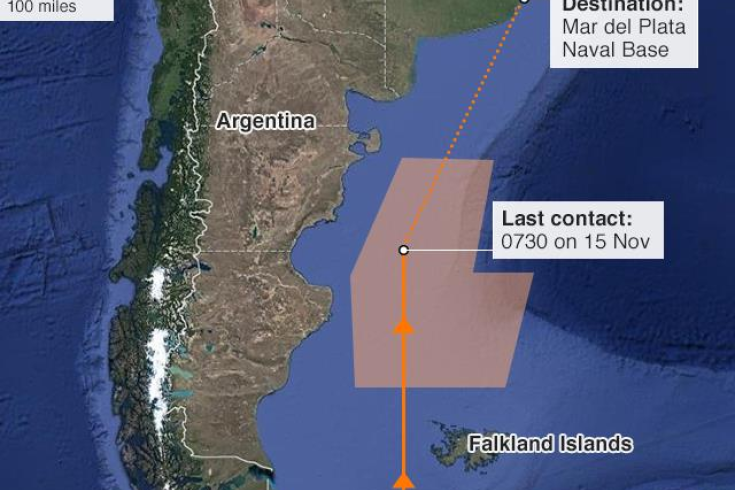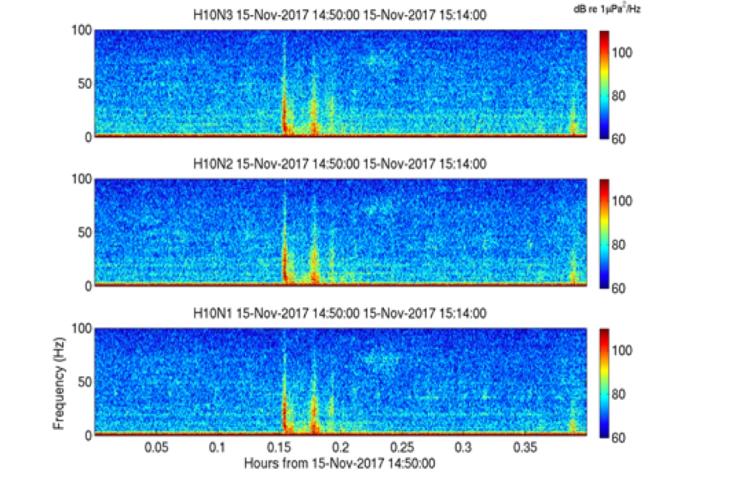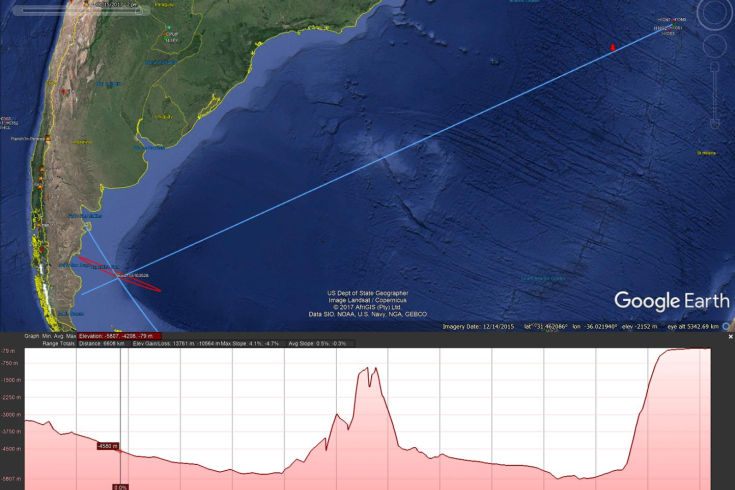CTBTO hydroacoustic data used to aid search for missing submarine ARA San Juan
24 November 2017
Around 300 monitoring stations dotted around the globe (map) constantly monitor the planet for signs of nuclear explosions, using four complementary technologies: seismic, hydroacoustic, infrasound, and radionuclide. The data from the stations is sent directly to Vienna from where they are shared in near real-time with all states signatories of the Comprehensive Nuclear-Test-Ban Treaty (CTBT). Data is shared constantly and equally with all states for experts to conduct analysis. CTBTO also analyses data and provides these reports to states signatories several times a day.

What did CTBTO detect?
On 15 November 2017 two CTBTO hydroacoustic stations detected an unusual signal in the vicinity of the last known position of missing Argentine submarine ARA San Juan. Hydroacoustic stations HA10 (Ascension Island) and HA04 (Crozet) detected a signal from an underwater impulsive event that occurred at 13:51 GMT on 15 November. The location of the event is as follows: Event Latitude: -46.12 deg; Event Longitude: -59.69 deg which is in the vicinity of the last known location of the ARA San Juan. Details and data were made available to the Argentinian Authorities to support the search operations that are underway.

What are hydroacoustic stations?
The hydroacoustic stations are part of the CTBTO’s International Monitoring System (IMS) which monitors the globe continuously for signs of nuclear explosions. Low frequency underwater sound, such as the one that can be produced by a nuclear test, propagates very efficiently through water. Consequently these underwater sounds can be detected at great distances, even thousands of kilometres, from their source. This is why the IMS requires only eleven hydroacoustic stations to monitor effectively the world’s oceans. HA04 at Crozet Island (France), located half way between Africa and Antarctica in the Southern Indian Ocean, was certified in June 2017 as the final of these eleven stations.

Why did it take so long to report this signal?
Sound travels very efficiently under water and the oceans are very “noisy”. Our engineers had to sift through a very large volume of data from underwater hydrophones in far-reaching parts of the world, looking for signals which could be related to the submarine’s disappearance. Also, the IMS is designed to detect larger events: nuclear explosions. This means that a smaller signal such as the one that was detected in this case is much more difficult to isolate and locate. Picking up evidence of a relatively small source of sound in the ocean requires manual analysis of data and custom-designed software. Many thousands of possible signals from sources of noise had to be sorted through and in some cases new algorithms and approaches were developed to filter out other noise and to find this signal. This effort took considerable time by dedicated scientists.
Sound travels very efficiently under water and the oceans are very “noisy”. Our engineers had to sift through a very large volume of data from underwater hydrophones in far-reaching parts of the world, looking for signals which could be related to the submarine’s disappearance. Also, the IMS is designed to detect larger events: nuclear explosions. This means that a smaller signal such as the one that was detected in this case is much more difficult to isolate and locate. Picking up evidence of a relatively small source of sound in the ocean requires manual analysis of data and custom-designed software. Many thousands of possible signals from sources of noise had to be sorted through and in some cases new algorithms and approaches were developed to filter out other noise and to find this signal. This effort took considerable time by dedicated scientists.
Was this an explosion? How big was the explosion?
The system detected a short, impulsive, and broadband signal in a low frequency spectrum that is not audible to humans. The signal did not look like earthquakes or biological sounds that are commonly heard under water, but it has some characteristics in common with signals from underwater explosions. Estimating a possible magnitude is even more difficult because this sound has propagated over a large distance from the source location to the receiver, but this is something that the engineers and scientists are currently still working on.
How sure are you that this is from the missing submarine ARA San Juan?
We can only report that we found this signal that originated a few hours after the last known contact and in the vicinity of the last known reported location of the submarine, and which does not resemble to other natural sounds that are commonly recorded in the ocean.
How will this information help?
As soon as we were confident that our information was accurate, we informed the Argentinian authorities. Analysis of the data is still ongoing. Our aim is to contribute to the search and rescue efforts currently underway. We fervently hope for a positive outcome to this rescue effort.
24 Nov 2017